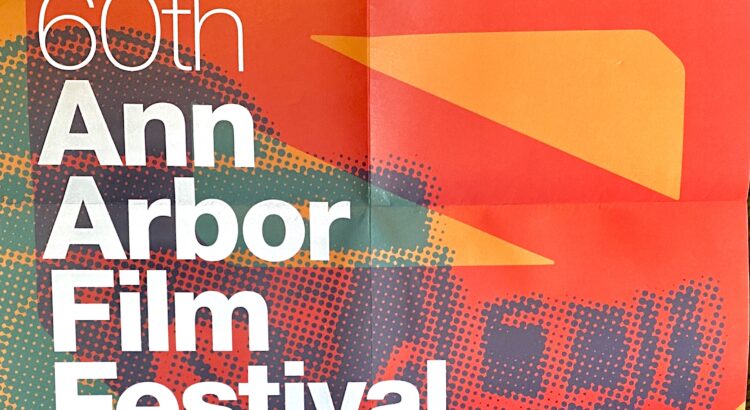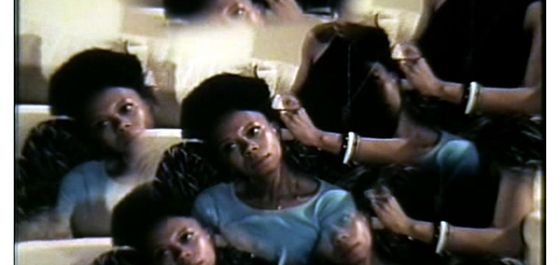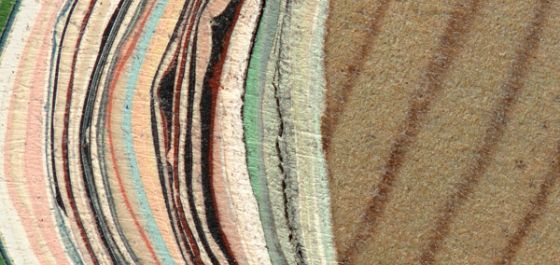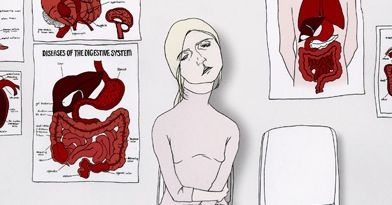Another year of the incredible Ann Arbor Film Festival and another year of incredible films. And I have the great honor and pleasure of sharing the night of Films in Competition 7: Animation.
As any AAFF enthusiast and animator knows, animation brings inanimate characters to life. That can be anything between 2-dimensional drawing, stop-motion photos, claymation, 3D modeling, or maybe even any wild combination of them! Animation is a constantly growing and changing field in the film industry, and we can always trust technology and innovative animators to find new ways to impress and wow the audience with never before seen styles of animation.
The 55th Ann Arbor Film Festival showcased a series of remarkable new animations for the audience. As the official website phrased it, “Ten recent animated films from near and far, featuring an artificial intelligence with the affective capacities of a kitten, memories of the ‘birds and the bees’ talk, a suburban woman who can’t stop growing fingers, a mother’s alcohol addiction, the most notorious women’s prison in East Germany, broken dolls and boiling stew, screen obsession and more.”
Friday night, I walked into the Michigan Theater with a friend. And having arrived a tad bit late, we were greeted by a packed theater of fellow film enthusiasts. We managed to spot seats on the balcony and found ourselves under the gaze of a cat on the big screen — Kitty AI.

Artificial Intelligence for Governance: Al the Kitty is an animation directed by Pinar Yoldas with the official description: “It is year 2039. An artificial intelligence with the affective capacities of a kitten becomes the first non-human governor. She leads a politician-free zone with a network of Artificial Intelligences. She lives in mobile devices of the citizens and can love up to 3 Million people.”
In other words, AI the Kitty is a computerized cat governor destined for greatness. As messy as politics can be, AI the Kitty assures the audience of her efficiency and equity, promising that she herself is far too intelligent for the chaotic nature of politics and that her level of professionalism in her field of expertise was no laughing matter. I was definitely convinced.
Artificial Intelligence for Governance: Al the Kitty is an animation that felt a little like propaganda for a kitty campaign, but as if I would ever object to that!

The following feature was a 9-minute animation directed by Alain Delannoy, called “The Talk” True Stories About The Birds And The Bees. The title did a pretty good job of describing the short film. It was just as the title advertised: a group of people discuss their experiences with their parents when they first had “the talk.”
Fun, entertaining, and hilarious, “The Talk” True Stories About The Birds And The Bees circles the topic of sex with honesty and humor. It definitely questions the humility of the subject, addressing the fact that although we as a society are embarrassed to talk about it, we accept sex to be a “normal” part of life, something that humans do in order to reproduce. Simple biology. And yet, the way parents go about teaching their children always winds up on a whole new level of crazy, ridiculous, and unnecessarily embarrassing.

Up next on the screen was director Matt Reynolds’s Hot Dog Hands, a 7-minute animation following the woes of a woman tormented for her — you guessed it — hot dog hands. This woman grows fingers at an exponential rate, and even her arms are consumed by the growing number of fingers, making her unable to use them for anything and rendering her opposable thumbs useless. The fact that this woman is pink like raw hot dogs probably didn’t help her situation either.
Pushing the boundaries of body horror, the animation is definitely not for the faint of heart. Although it is brightly colored and playful, the mischief and playfulness in color and style is juxtaposed with disturbing acts of cannibalism that take place later in the film. Of course, Hot Dog Hands Lady does end up finding happiness, by losing her fingers to the mailbox-living-underground-cannibals who desperately need to feed on her fingers to sustain themselves. As a result, Hot Dog Hands Lady loses her unwanted fingers and is worshipped by the Hot-Dog-Hands-eaters who are able to sustain themselves off her regenerating fingers. And they lived happily ever after.

After that, was Whatever the Weather, a 12-minute animation directed by Remo Scherrer. In contrast to the animation that preceded it, Whatever the Weather carried a much darker, more solemn, and somber tone. Set in black and white, the animation is driven by the play between negative and positive space, using one and the other to create depth and shadow in the characters on the screen. The lack of solidity in the animation reiterates the theme of the narration: a child’s troubles beset by her alcoholic mother.
As it is summarized on the website, “Wally’s childhood is increasingly turned upside down by her mother’s alcohol addiction. She experiences the excesses and consequences of addiction first hand. Desperately, the eight-year-old tries to keep up normality in her own life and the life of her family by any means. A roller coaster ride between helplessness, excessive demands and desperation begins. It’s a daily struggle for survival.”

Following this somber telling of Wally’s childhood, was Lauren Cook’s TRANS/FIGURE/GROUND, a 5-minute animation: “Painted 16mm film undergoes a monstrous transformation becoming neither analog nor digital. A film about uncanny valleys and the space between.”
Without definitive characters or voices, Lauren Cook’s TRANS/FIGURE/GROUND becomes strictly visual and compelling. The entire animation thrums and the entire theater tremors to the pulsing sounds of this animation, which forces the disorientation in the audience to become innate and charged with emotion.

With four films left for the night, next was a dreary and somber 7-minute animation called Broken – The Women’s Prison at Hoheneck, which shares the story of political inmates Gabriele Stoetzer and Birgit Willschuetz at Hoheneck Castle, the most notorious women’s prison in East Germany. As the official website says, “Their story is one of overcrowded cells, despotic hierarchies, ruthless everydays, and the enduring effects of incarceration. Most of all, however, it is about the crushing pressure of forced labour. Prisoners at Hoheneck manufactured millions of pantyhose, bed sheets, and other products for West German retailers, bringing enormous profits to both sides of the Iron Curtain. Part of the young animadoc tradition, the seven-minute film pairs original audio interview extracts with abstract, monochrome animation.”
Edge of Alchemy comes onto the screen after it. A 19-minute animated collage directed by Stacey Steers, “Edge of Alchemy is the third film in a trilogy examining women’s inner worlds. In this handmade film, constructed from over 6,500 collages, the actors Mary Pickford and Janet Gaynor are seamlessly appropriated from their early silent features and cast into a surreal epic with an upending of the Frankenstein story and an undercurrent of hive collapse.”
“Surreal” and “Frankenstein” are the two best words to describe the world of Edge of Alchemy. Although I was out of context and had no clue about the other two films in the trilogy, Edge of Alchemy definitely delivers a world of intrigue, science, and bees. Scientist Lady brings Bee Lady to life, much like in the classic tale of Frankenstein.
The night of animation ends on a fun note in the form of two short and sweet 5-minute films.

First is Batfish Soup by Amanda Bonaiuto, a short story that is a little too relatable about relatives coming over to visit. As it is summarized in the official website, “Wacky relatives give way to mounting tensions with broken dolls, boiling stew and a bang.” Very, very wacky, Batfish Soup definitely proves itself to be entertaining and weird, in the best way possible.

Last but not least, swiPed! Directed by David Chai, swiPed is a fun take on the modern age’s obsession with smartphones and tablets. It’s cute, short, and playful, poking fun at everyone’s inability to stay apart from our devices. Equally as funny is its playful summary: “Texters texting, tweeters tweeting, likers liking, posters posting, Googlers Googling, Amazonians Amazoning, webheads surfing, snappers chatting, pinnters pinning, tubers tubing, tenders tindering, Netflixers chilling – are we binging too much? More connected than ever, but more distant by the day. Is humanity being swiped away?”
All in all, another year of the incredible Ann Arbor Film Festival and another year of incredible films.



















